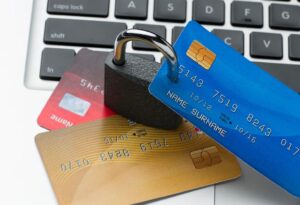During the pandemic, the use of contactless payment methods increased. However, as more people used digital transactions, online fraud increased, particularly in the Philippines. Fraudsters and cybercriminals are now capable of coming up with increasingly sophisticated schemes to catch consumers off guard and swindle them out of their money.
When using digital money services, nobody wants to become a victim of an unauthorized transaction or fraudulent behavior. A collaborative effort between financial institutions, governmental organizations, and end users is required to reduce digital fraud and enhance cyber hygiene.
To stop fraud, banks have strong security measures in place. In a similar vein, the Bangko Sentral ng Pilipinas (BSP), the country’s central bank, promotes financial literacy through a program called “Digital Literacy,” which aims “to boost public trust and confidence in the digital finance ecosystem” and so lower the percentage of unbanked Filipinos.
You must uphold your end of the contract as a customer by being cautious and performing due diligence in all of your online financial transactions. Keep yourself informed on fraudulent banking transactions and how to stop or handle them to actively participate in protecting your money.
What is an unauthorized transaction and when does it occur?
Any financial account activity that you did not approve of is referred to as an unauthorized transaction. This includes fraudulent transactions, which may take place right in front of you if you’re not aware of the various strategies con artists employ to deceive you. It also covers unintentional mistakes brought on by uncontrollable system malfunctions.
Your personal information and account information being stolen makes you more susceptible to confronting unlawful activity. Fraudsters may use your accounts to conduct financial transactions such as fund transfers, withdrawals, and purchases.
Unauthorized Banking Transaction Examples
You are still vulnerable to scams even if you have one of the top savings accounts in the Philippines. All it can guarantee is that it will provide you access to superior security. There is no perfect security posture, especially in the face of cyberattacks.
Even the best and safest banks can experience internal system problems and cybersecurity breaches occasionally. Here are several instances of this.
Attack by BDO “Mark Nagoyo” Cyberfraud
Midway through December 2021, BDO was the victim of a cyber fraud attack that resulted in the loss of funds from the accounts of about 700 of its clients. Particularly, illicit financial transfers were made from BDO to a number of Mark Nagoyo’s UnionBank accounts.
The National Bureau of Investigation claims that phishing attacks made a number of accounts susceptible, which led to the start of the scam. Four people were subsequently charged with financial fraud out of at least six persons of interest that were discovered[3]. None of them were found to be employed by either BDO or UnionBank.
Double-Debit System Error in BPI
Customers of BPI were given an unpleasant post-holiday surprise on January 4, 2023, when they unexpectedly lost money in their accounts. The unforeseen deductions resulted from a system error that led to the posting of debit transactions performed between December 30 and December 31 of the previous year twice .
Customers were not happy when, at the height of the problem, BPI’s internet and mobile banking services were rendered unavailable as the bank worked to fix the problem. However, BPI customer care told customers that there was no need for concern because there had been no data breach and that their accounts were protected.
How to Avoid Fraudulent Banking Transactions
You’re never completely safe from scammers, regardless of your bank account type or service provider for banking. Use the advice in this article to safeguard your online accounts from cyberthreats and prevent fraudulent transactions.
Set Multi-Factor Authentication to On
Create additional security measures to keep hackers out of your financial accounts. To bolster your cyber defense, you can allow biometric access and set up security questions. Additionally, you can set one-time passwords, email alerts, and text alerts to notify you whenever a transaction is completed with your account.
Don’t divulge account information and personal information
On a need-to-know basis, and only with persons and institutions you trust, you can disclose your basic account information, such as account name and number. Don’t divulge to anyone your bank account password, personal identification number (PIN), or one-time password (OTP), as well as other security information.
See also the following advice:
- Never share your identification cards, debit cards, or credit cards on open forums or social networking sites. Otherwise, you’ll leave yourself open to card cloning and identity theft.
- Keep in mind that financial institutions do not randomly contact customers to request their personal information. They won’t do it until you, the consumer, get in touch with them first.
Check the legitimacy of the merchants you deal with
Examine the reliability of each individual and business you do business with. Make every effort to ensure the legitimacy of any transaction you engage in. If you even have the smallest inkling that something is amiss, conduct your own background investigation or get in touch with your financial institution for confirmation.
And be sure you’ve adequately addressed the hazards of doing so before you approve a deal or a transaction.
Please read: Online shopping fraud this holiday season
Check for malicious hardware on POS and ATM equipment
On automated teller machines (ATM) and point-of-sale (POS) systems, con artists can install malicious software and hardware, such as cameras, scanners, and keypad overlays. These programs and parts have the ability to copy data from your card and record your PIN. Then, they produce fake cards using these vital pieces of information.
How to stop this from occuring is as follows:
- When utilizing an ATM or POS equipment, be careful to keep an eye out for any loose parts.
- Examine the area where these gadgets are installed. Use ATM and POS equipment only in places that are safe, secure, and difficult for fraudsters to access.
Search at common frauds
Learn about the various methods that con artists use to deceive people. You’ll have a better notion of the tricks to avoid and what to do if you come across them after reading this. Additionally, you’ll increase your digital literacy and cybersecurity understanding by doing this.
Always Be Wary and Critical
Every time you conduct a financial transaction, use good judgment. Don’t let your emotions influence your choice because con artists frequently employ emotional manipulation techniques. Always keep in mind that if an offer seems too good to be true, it generally is.
Being skeptical of everything that is provided to you will make it more difficult for con artists to locate their next victim and flee with your money.
Best way to report Unauthorized Transactions
In order for you to report frauds or scams involving the goods and services provided by BSP-supervised financial institutions, the BSP has established a BSP Online Buddy (BOB) (BSFI). Web chat and Facebook Messenger are the two channels via which you can contact BOB.
How to Use Web Chat to Report Fraud to BSP
- Visit the BSP website to connect to BOB via web chat .
- To access the chat box, click on the BOB icon in the page’s lower right corner.
- When filing a complaint, choose New Complaint. If you wish to see a list of questions that are frequently asked, click FAQ.
- Enter the specifics of your query, demand, or report in the chat box.
- Await BOB’s response before responding.
How to Use Facebook Messenger to Report Fraud to the BSP
- Visit the official BSP Facebook page.
- To begin a chat, click on the Messenger icon.
- Choose “Get Started.”
- Wait for BOB to finish sending the chat’s automated instructions before continuing.
- Enter the specifics of your query, demand, or report in the chat box.
- Await BOB’s response before responding.
How to Inform Your Bank of Fraudulent Transactions
Simply follow the instructions below if you become a victim of bank fraud or cybercrimes including identity theft, skimming, cloning, phishing, vishing, or spoofing.
- Submit a Report
- Describe the unauthorized transaction to the merchant.
- Contest the Account Charges
- Change your passwords and PINs.
- Open a New Account or Obtain a New Card
Conclusion
You contribute significantly to the prevention of data breaches and the defense against cybersecurity threats as a user of digital financial products and services. With the right instruction, you’ll be able to identify scams at a distance, stop illicit transactions, and avert dire consequences. You don’t want to be the one who falls apart.





